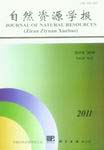Resources Utilization and Management
CAI Ya-qing, QIU Huan-guang, XU Zhi-gang
China’s demand for energy has been growing rapidly in recent years and its dependence on international energy market has been keeping increase. Using agricultural crop residue as an energy resource is an important choice of developing renewable energy and relieving the energy shortage of China. However, there are still many debates on how many crop residues can be used for commercial energy production in China. On the basis of the results of existing studies and the official statistic data, this paper analyzed the energy utilization potentials and densities of crop residues in different regions and provinces of China. In this paper, we first calculated the theoretic amount of crop residue in different regions of China based on the outputs of different crops and the collectable amount of crop residue which is part of the theoretic amount minus the uncollectable amount, then we calculated the amount of crop residue which could be used for commercial energy production. The results show that China’s theoretical resource quantity of crop residue in 2009 was 7.48×108 t, the available crop residue that can be collected was 6.34×108 t, among which 1.52×108 t can be used for commercial energy production. The distribution of crop residue that can be used for commercial energy utilization is very unequal across China. The quantity of crop residue for energy utilization is larger in the lower and middle reaches of the Yangtze River, Northeast China and North China, where the quantities of crops residue for energy production are 0.42×108 t, 0.37×108 t and 0.35×108 t, respectively. We also calculated the densities of crop residue in different regions of China. The results show that the densities of crop residue could be used for energy utilization in Qinghai-Tibet Plateau, Loess Plateau, Southwest China, and Northwest China are lower than other regions. Given the high cost of collecting crop residue, it is not suitable to construct large-scale crop residue based power plant in Tibet, Shanxi, Qinghai, Sichuan, Gansu, Shaanxi, Guizhou, Ningxia, Liaoning, Fujian, Inner Mongolia, Tianjin, Hebei, Chongqing, Shanghai and Beijing. Only Jilin, Henan, Guangxi, Jiangsu, Anhui, Jiangxi, Heilongjiang and Hubei are appropriate to establish large-scale crop residue based fuel ethanol plants. The results of this study have important implications for the formulation of China’s crop residue utilization policy.
